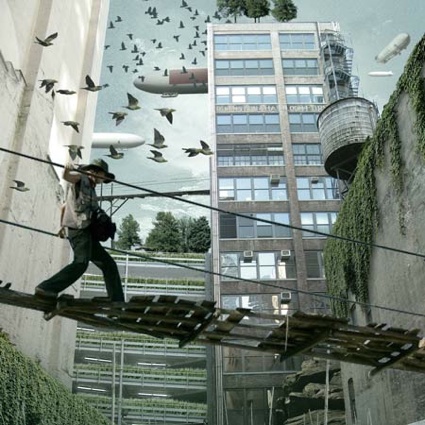Utopia Forever – Visions of Architecture and Urbanism. An inspirational exploration of utopias and radical approaches to city planning. Edited by Robert Klanten and Lukas Feireiss (available on amazon USAand UK.)
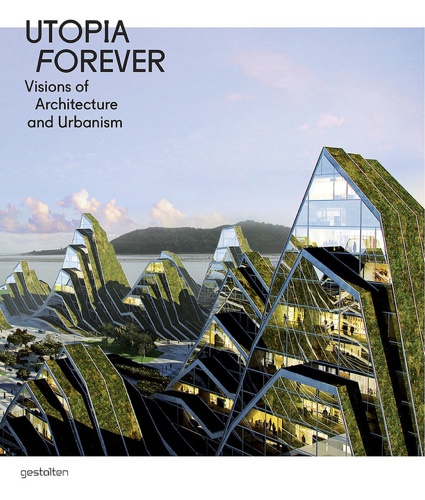
Publisher Gestalten writes: Whether created by established architects and artists or new talents, the examples in Utopia Forever are important catalysts for fundamental change and are radically shaping our notions of life in the future. The current projects and concepts from architecture, city planning, urbanism, and art collected here point beyond the restrictions of the factual to unleash the potential of creative visions. This inspiring work explores how current challenges for architecture, mobility, and energy as well as the logistics of food consumption and waste removal can be met. Text features by both architects and theorists give added insight.
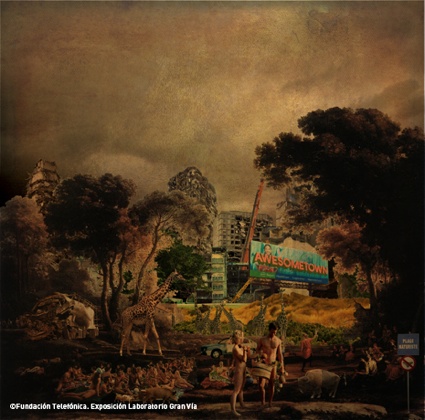 Amid (cero9) + Colectivo Cuartoymitad‘s proposal The Big Mech Co
Amid (cero9) + Colectivo Cuartoymitad‘s proposal The Big Mech Co
Everything in this book is orderly and rational. Clean and clear design. Project neatly presented: title, name of the architects, envisioned location and envisioned completion date. Followed by a brief summary of the context for the project and a few paragraphs that describe its principles and the way it works.
Five themes govern the selection of projects. Great Scapes examines proposals of living in inhospitable spaces: deserts, caves, online, up in the sky, etc. As its name suggests the chapter Rising Tides is all about projects that responds to rising sea levels. Ecotopia Emerging presents projects that have distinctly (and at times, extreme) eco-conscious ideals. Technology Matters highlights the impact of innovation on the way architects envision utopia. The last section, Sky’s the Limit engages with vertical architecture.
The dozens of projects presented in the volume are accompanied by six essays that vary from the pragmatic to the humorous: Dan Wood and Amale Andraos walk us briskly through architectural utopia of the 1960s and 70s while Geoff Manaugh offers a tongue-in-cheek but also remarkably spot-on game that would help you build every possible scenario of utopian architecture.
Everything in this book is orderly and rational. Everything but the subject of the monograph of course. But no matter how ‘conceptual’ and outlandish the works presented in the book might appear, they come with irony, lucidity and a desire to focus on society/the planet’s most pressing needs and as such, they provide valuable food for thought.
Some are mere exercises in speculations while others almost have their feet on the ground. Some are strangely seducing, others will give you nightmares.
Of course you will find in this book what any respectable book about utopian architecture should offer: pods of all sorts, vertical farms a gogo, mobile living spaces, cities built in the air, on the water, in the water and of course flooded cities. But there were also a few scenarios i had never heard about:
David A. Garcia has a couple of exciting projects in the book. My favourite is the Quarantined Library located on a cargo ship. Its mission is to collect infected and radioactive books, a robotic arms that engraves secrets on wooden panels infected by termites, and historically censored books. I couldn’t find illustrations online but i did find some for the South Pole living station for 100 visitors with minimum environmental impact. The space would be holed out in a super large iceberg which would eventually melt in 7 to 10 years time.
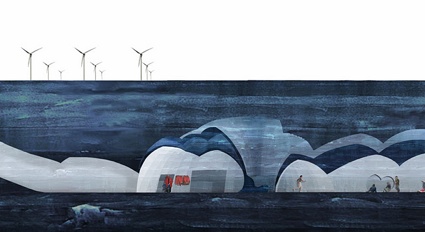
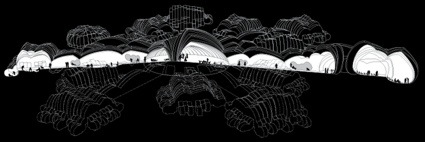 David A.Garcia, Sustainable Iceberg Living Station
David A.Garcia, Sustainable Iceberg Living Station
Mila Studio proposes to build a 1,000m tall faux mountain at the site of the masterpieces that is the former Tempelhof airport in Berlin instead of hotels and sky-high offices. The Berg would be the world’s largest man-made mountain, covered with snow from September to March and would serve as a tourist attraction for skiers in the otherwise slope-less city.
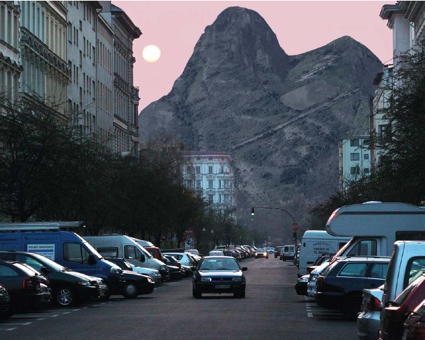 Mila Studio, The Berg
Mila Studio, The Berg
London-based NaJa and deOstos office develops speculative, alternative urban concepts. One of the most attention-grabbing is the Hanging Cemetery of Baghdad which explore a possible response to extreme cultural and political challenges such as the crisis in the Middle East. Initiated in 2004, the project envisions “a gigantic presence of a hanging funereal structure [that] extends over the volatile city of Baghdad.”
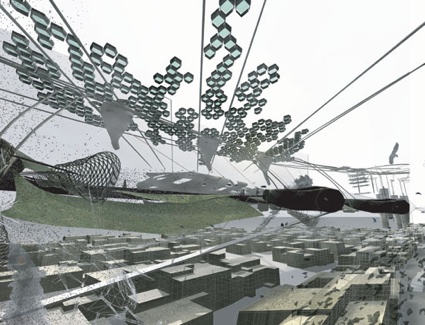 NaJa and deOstos, Hanging Cemetery of Baghdad
NaJa and deOstos, Hanging Cemetery of Baghdad
Nicolas Mouret‘s Phyte is a 380m high tower that would move in natural flow and offer a stark contrast to the city’s static skyline. The mechanical energy of the rocking tower would generate enough electricity to supply the building’s lighting.
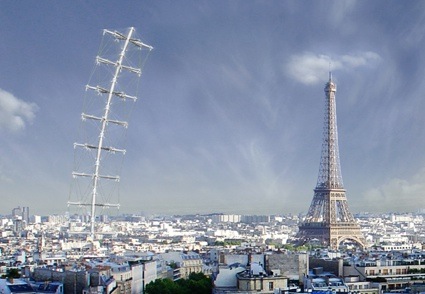 Nicolas Mouret, PHYTE
Nicolas Mouret, PHYTE
Stéphane Malka’s Self Defense hijacks The Grande Arche De La Défense in Paris and turn it into the ‘Great arch of fraternity’ at the service of the forsaken, the marginalized, refugees, demonstrators, dissenters, hippies, utopians, and the stateless of all kinds.
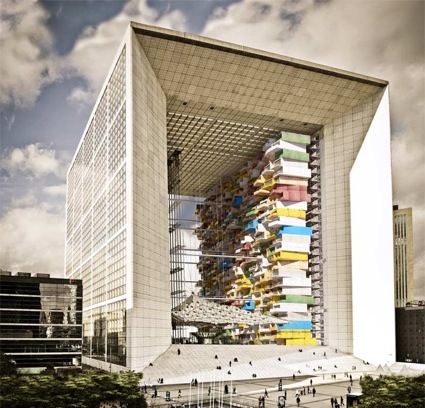 Stéphane Malka, Auto-Défense
Stéphane Malka, Auto-Défense
Where the Grass is Greener by Tomorrow’s Thoughts Today envisions a group of Londoners who have chosen to segregate themselves from the rest of society, and has taken up the mantle of sustainability in an extraordinary way. Driven by a set of ethics that places them in sometimes radical opposition to the rest of London, they have adopted a lifestyle that effectively makes them a carbon sink for the remainder of the city.
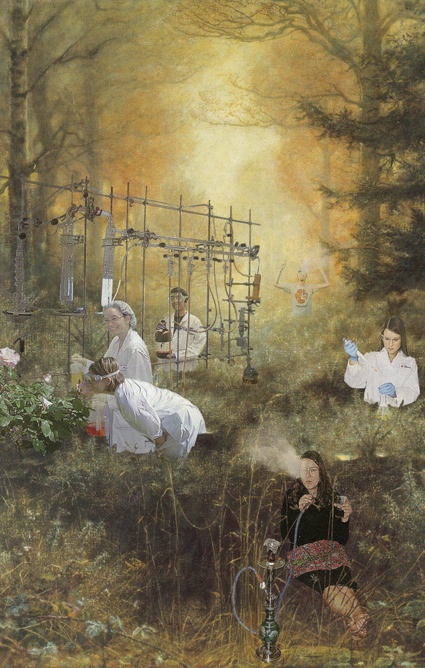 Tomorrow’s Thoughts Today, Where the Grass is Greener (Hallucinogenic garden)
Tomorrow’s Thoughts Today, Where the Grass is Greener (Hallucinogenic garden)
Saturation City explores the future of Australian urban space in 40 years time. The proposal manufactured a crisis – a rise in sea level of 20m, tested around Melbourne and Port Philip Bay – that would require dramatic urban upheaval. The park/garden, the business district, the suburb and the coastline, are subjected to dramatic densifications in response to the ‘flood’.
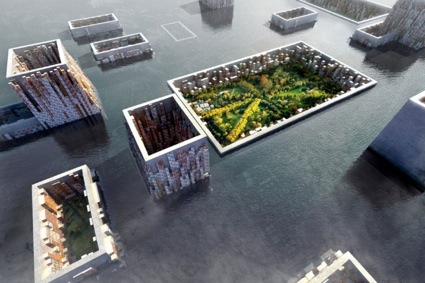 Bild, Dyskors, MGS and Material Thinking, Saturation City
Bild, Dyskors, MGS and Material Thinking, Saturation City
Views inside the book:
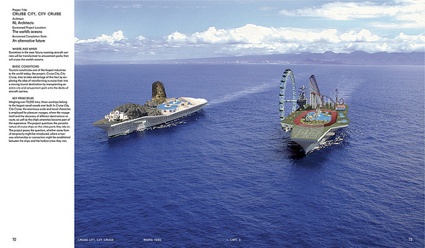
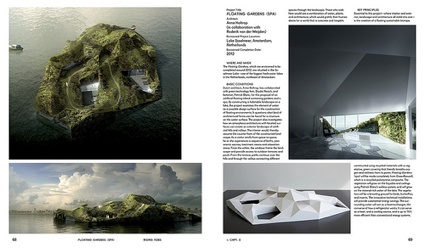
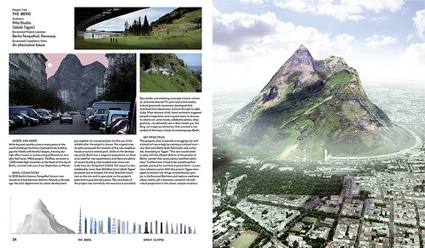
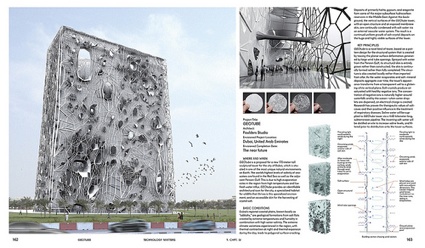
Image on the homepage: NL Architects, Cruise City, City Cruise, 2003.

